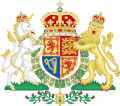| Lord Keeper | Term of office | Other ministerial portfolios held during tenure | Party | Ministry | Monarch
(Reign) |
|---|
| 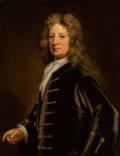 | Thomas Wharton
1st Marquess of Wharton [nb 15] | 23 September
1714 | 31 August
1715 | | Whig | Townshend | George I

r. 1714–1727 |
|---|
| 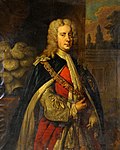 | Charles Spencer
3rd Earl of Sunderland | 31 August
1715 | 19 December
1716 | | — |
|---|
| 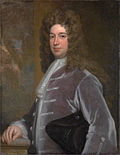 | Evelyn Pierrepont
1st Duke of Kingston-upon-Hull | 19 December
1716 | 6 February
1719 | | — |
|---|
| Stanhope–Sunderland I |
| Stanhope–Sunderland II |
| 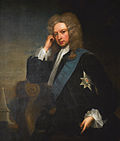 | Henry Grey
1st Duke of Kent | 6 February
1719 | 11 June
1720 | | — |
|---|
|  | Evelyn Pierrepont
1st Duke of Kingston-upon-Hull | 11 June
1720 | 11 March
1726 | | — |
|---|
| Walpole–Townshend |
|  | Thomas Trevor
1st Baron Trevor | 11 March
1726 | 8 May
1730 | | — |
|---|
George II

r. 1727–1760 |
|  | Spencer Compton
1st Earl of Wilmington | 8 May
1730 | January
1731 | | Whig | Walpole |
|---|
|  | William Cavendish
3rd Duke of Devonshire | 12 January
1731 | 5 May
1733 | | Whig |
|---|
|  | Henry Lowther
3rd Viscount Lonsdale | 5 May
1733 | 16 May
1735 | | — |
|---|
| 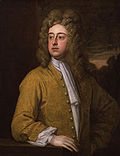 | Francis Godolphin
2nd Earl of Godolphin | 16 May
1735 | 7 April
1740 | | — |
|---|
| 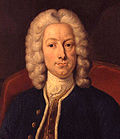 | John Hervey
2nd Baron Hervey | 7 April
1740 | 13 July
1742 | | — |
|---|
| 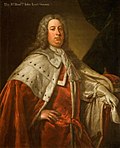 | John Leveson-Gower
2nd Baron Gower | 13 July
1742 | 10 December
1743 | | Tory | Carteret |
|---|
|  | George Cholmondeley
3rd Earl of Cholmondeley | 10 December
1743 | 27 December
1744 | | — |
|---|
|  | John Leveson-Gower
1st Earl Gower [nb 16] | 27 December
1744 | 8 June
1755 | | Tory | Broad Bottom
(I & II) |
|---|
| Newcastle I |
|  | Charles Spencer
3rd Duke of Marlborough | 8 June
1755 | 22 December
1755 | | — |
|---|
| 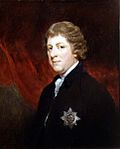 | Granville Leveson-Gower
2nd Earl Gower | 22 December
1755 | 30 June
1757 | | Tory |
|---|
| Pitt–Devonshire |
| 1757 Caretaker |
|  | Richard Grenville-Temple
2nd Earl Temple | 30 June
1757 | 5 October
1761 | | — | Pitt–Newcastle |
|---|
George III

(1760–1820)
[nb 17] |
|  | John Russell
4th Duke of Bedford | 25 November
1761 | 22 April
1763 | | Whig |
|---|
| Bute |
|  | George Spencer
4th Duke of Marlborough | 22 April
1763 | 30 July
1765 | | — | Grenville
( Whig–Tory ) |
|---|
|  | Thomas Pelham-Holles
1st Duke of Newcastle | 30 July
1765 | 30 July
1766 | | Whig | Rockingham I |
|---|
| 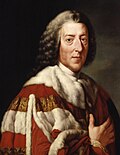 | William Pitt
1st Earl of Chatham | 30 July
1766 | 2 November
1768 | | Whig | Chatham
( Whig–Tory ) |
|  | George Hervey
2nd Earl of Bristol | 2 November
1768 | 26 February
1770 | | — | Grafton
( Whig–Tory ) |
|---|
|  | George Montagu-Dunk
2nd Earl of Halifax | 26 February
1770 | 22 January
1771 | | Tory | North |
|---|
|  | Henry Howard
12th Earl of Suffolk | 22 January
1771 | 12 June
1771 | | — |
|---|
|  | Augustus FitzRoy
3rd Duke of Grafton | 12 June
1771 | 4 November
1775 | | Whig |
|---|
|  | William Legge
2nd Earl of Dartmouth | 4 November
1775 | 27 March
1782 | | — |
|---|
|  | Augustus FitzRoy
3rd Duke of Grafton | 27 March
1782 | 4 April
1783 | | Whig | Rockingham II |
|---|
Shelburne
( Whig–Tory ) |
|  | Frederick Howard
5th Earl of Carlisle | 4 April
1783 | 23 December
1783 | | — | Fox–North
( Whig–Tory ) |
|---|
| 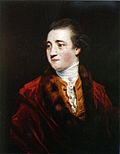 | Charles Manners
4th Duke of Rutland | 23 December
1783 | 27 November
1784 | | — | Pitt I |
|---|
|  | Granville Leveson-Gower
1st Marquess of Stafford [nb 18] | 27 November
1784 | 1794 | | Tory |
|---|
| 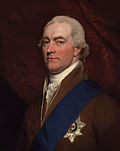 | George Spencer
2nd Earl Spencer | 1794 | 16 July
1794 | | Whig |
|---|
|  | John Pitt
2nd Earl of Chatham | 16 July
1794 | 14 February
1798 | | — |
|---|
|  | John Fane
10th Earl of Westmorland | 14 February
1798 | 5 February
1806 | | Tory |
|---|
| Addington |
| Pitt II |
|  | Henry Addington
1st Viscount Sidmouth | 5 February
1806 | 15 October
1806 | | Tory | All the Talents
( Whig–Tory ) |
|---|
|  | Henry Vassall-Fox
3rd Baron Holland | 15 October
1806 | 25 March
1807 | | Whig |
|---|
|  | John Fane
10th Earl of Westmorland | 25 March
1807 | 30 April
1827 | | Tory | Portland II |
|---|
| Perceval |
| Liverpool |
George IV

r. 1820–1830 |
|  | William Cavendish-Scott-Bentinck
4th Duke of Portland | 30 April
1827 | 16 July
1827 | | Tory | Canning
( Canningite–Whig ) |
|---|
|  | George Howard
6th Earl of Carlisle | 16 July
1827 | 26 January
1828 | | Whig |
|---|
Goderich
( Canningite–Whig ) |
| 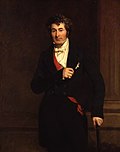 | Edward Law
2nd Baron Ellenborough | 26 January
1828 | 10 June
1829 | | Tory | Wellington–Peel |
|  | James St Clair-Erskine
2nd Earl of Rosslyn | 10 June
1829 | 22 November
1830 | | Tory |
|---|
William IV

r. 1830–1837 |
| 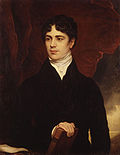 | John Lambton
1st Baron Durham | 22 November
1830 | 3 April
1833 | | Whig | Grey |
|---|
|  | Frederick John Robinson
1st Earl of Ripon | 3 April
1833 | 5 June
1834 | | Whig |
|---|
|  | George Howard
6th Earl of Carlisle | 5 June
1834 | 30 July
1834 | | Whigs |
|---|
|  | Constantine Phipps
2nd Earl of Mulgrave | 30 July
1834 | 14 November
1834 | | Whig | Melbourne I |
|---|
| 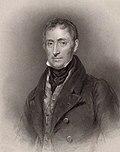 | James Stuart-Wortley-Mackenzie
1st Baron Wharncliffe | 15 December
1834 | 8 April
1835 | | Conservative | Peel I |
|---|
|  | John Ponsonby
1st Baron Duncannon
styledViscount Duncannon | 23 April
1835 | 15 January
1840 | | Whig | Melbourne II |
Victoria

r. 1837–1901 |
| 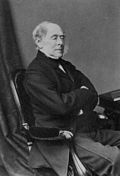 | George Villiers
4th Earl of Clarendon | 15 January
1840 | 30 August
1841 | | Whig |
|  | Richard Temple-Nugent-Brydges-Chandos-Grenville
2nd Duke of Buckingham and Chandos | 3 September
1841 | 2 February
1842 | | Conservative | Peel II |
|---|
|  | Walter Montagu-Douglas-Scott
5th Duke of Buccleuch | 2 February
1842 | 21 January
1846 | | Conservative |
|---|
|  | Thomas Hamilton
9th Earl of Haddington | 21 January
1846 | 27 June
1846 | | Conservative |
|---|
|  | Gilbert Elliot-Murray-Kynynmound
2nd Earl of Minto | 6 July
1846 | 21 February
1852 | | Whig | Russell I |
|---|
|  | James Gascoyne-Cecil
2nd Marquess of Salisbury | 27 February
1852 | 17 December
1852 | | Conservative | Who? Who? |
|---|
|  | George Campbell
8th Duke of Argyll | 4 January
1853 | 7 December
1855 | | Peelite | Aberdeen
( Peelite–Whig ) |
|---|
| Palmerston I |
|  | Dudley Ryder
2nd Earl of Harrowby | 7 December
1855 | 3 February
1858 | | Whig |
|---|
|  | Ulick de Burgh
1st Marquess of Clanricarde | 3 February
1858 | 21 February
1858 | | Whig |
|---|
|  | Charles Yorke
4th Earl of Hardwicke | 26 February
1858 | 11 June
1859 | | Conservative | Derby–Disraeli II |
|---|
|  | George Campbell
8th Duke of Argyll | 18 June
1859 | 26 June
1866 | | Liberal | Palmerston II |
|---|
| Russell II |
|  | James Harris
3rd Earl of Malmesbury | 6 July
1866 | 1 December
1868 | | Conservative | Derby–Disraeli III |
|---|
| 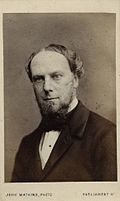 | John Wodehouse
1st Earl of Kimberley | 9 December
1868 | 6 July
1870 | | Liberal | Gladstone I |
|---|
| 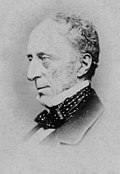 | Charles Wood
1st Viscount Halifax | 6 July
1870 | 17 February
1874 | | Liberal |
|---|
|  | James Harris
3rd Earl of Malmesbury | 21 February
1874 | 12 August
1876 | | Conservative | Disraeli II |
|---|
|  | Benjamin Disraeli
1st Earl of Beaconsfield | 12 August
1876 | 4 February
1878 | | Conservative |
|  | Algernon Percy
6th Duke of Northumberland | 4 February
1878 | 21 April
1880 | | Conservative |
|---|
|  | George Campbell
8th Duke of Argyll | 28 April
1880 | 2 May
1881 | | Liberal | Gladstone II |
|---|
| 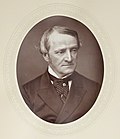 | Chichester Parkinson-Fortescue
1st Baron Carlingford | 2 May
1881 | 5 March
1885 | | Liberal |
|---|
| 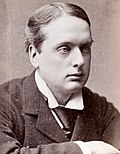 | Archibald Primrose
5th Earl of Rosebery | 5 March
1885 | 9 June
1885 | | Liberal |
|  | Dudley Ryder
3rd Earl of Harrowby | 24 June
1885 | 28 January
1886 | | Conservative | Salisbury I |
|---|
|  | William Ewart Gladstone
MP for Midlothian | 17 February
1886 | 20 July
1886 | | Liberal | Gladstone III |
|  | George Cadogan
5th Earl Cadogan | 3 August
1886 | 11 August
1892 | | Conservative | Salisbury II |
|---|
|  | William Ewart Gladstone
MP for Midlothian | 20 August
1892 | 10 March
1894 | | Liberal | Gladstone IV |
| 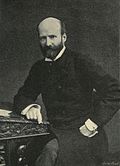 | Edward Marjoribanks
2nd Baron Tweedmouth | 10 March
1894 | 21 June
1895 | | Liberal | Rosebery |
|  | Richard Assheton Cross
1st Viscount Cross | 29 June
1895 | 12 November
1900 | | Conservative | Salisbury
(III & IV)
( Con.–Lib.U. ) |
|---|
|  | Robert Gascoyne-Cecil
3rd Marquess of Salisbury | 12 November
1900 | July
1902 | | Conservative |
Edward VII

r. 1901–1910 |
|  | Arthur Balfour
MP for Manchester East | 14 July
1902 | October
1903 | | Conservative | Balfour
( Con.–Lib.U. ) |
| 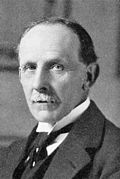 | James Gascoyne-Cecil
4th Marquess of Salisbury | 17 October
1903 | December
1905 | | Conservative |
| 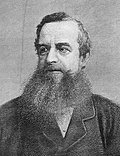 | George Robinson
1st Marquess of Ripon | 10 December
1905 | October
1908 | | Liberal | Campbell-Bannerman |
Asquith
(I–III) |
|  | Robert Crewe-Milnes
1st Marquess of Crewe [nb 24] | 9 October
1908 | October
1911 | | Liberal |
George V

r. 1910–1936 |
| 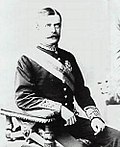 | Charles Wynn-Carington
1st Earl Carrington | 23 October
1911 | February
1912 | | Liberal |
|---|
|  | Robert Crewe-Milnes
1st Marquess of Crewe | 13 February
1912 | May
1915 | | Liberal |
|  | George Curzon
1st Earl Curzon of Kedleston | 25 May
1915 | December
1916 | | Conservative | Asquith Coalition
( Lib.–Con.–Lab. ) |
| 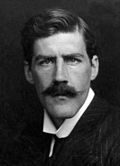 | David Lindsay
27th Earl of Crawford | 15 December
1916 | January
1919 | | Conservative | Lloyd George
(I & II)
( Lib.–Con.–Lab. ) |
|---|
|  | Bonar Law
MP for Glasgow Central | 10 January
1919 | March
1921 | | Conservative |
|  | Austen Chamberlain
MP for Birmingham West | 23 March
1921 | October
1922 | | Conservative |
| Vacant | October
1922 | May
1923 | | | Law |
|  | Robert Cecil
1st Viscount Cecil of Chelwood [nb 28] | 28 May
1923 | January
1924 | | Conservative | Baldwin I |
|---|
|  | J. R. Clynes
MP for Manchester Platting | 22 January
1924 | November
1924 | - Deputy Leader of the House of Commons
| Labour | MacDonald I |
|  | James Gascoyne-Cecil
4th Marquess of Salisbury | 6 November
1924 | June
1929 | | Conservative | Baldwin II |
|  | Jimmy Thomas
MP for Derby | 7 June
1929 | June
1930 | | Labour | MacDonald II |
|---|
|  | Vernon Hartshorn
MP for Ogmore | 5 June
1930 | March
1931 | | Labour |
|---|
|  | Tom Johnston
MP for West Stirlingshire | 24 March
1931 | August
1931 | | Labour |
|---|
| 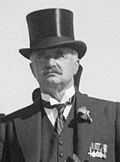 | William Peel
1st Earl Peel | August
1931 | November
1931 | | Conservative | National I
( N.Lab.–Con.–Lib.N.–Lib. ) |
|---|
|  | Philip Snowden
1st Viscount Snowden | 5 November
1931 | September
1932 | | National Labour | National II
( N.Lab.–Con.–Lib.N.–Lib.) |
|---|
|  | Stanley Baldwin
MP for Bewdley | 29 September
1932 | December
1933 | | Conservative |
|  | Anthony Eden
MP for Warwick and Leamington | 31 December
1933 | June
1935 | | Conservative |
|---|
|  | Charles Vane-Tempest-Stewart
7th Marquess of Londonderry | 7 June
1935 | November
1935 | | Conservative | National III
( Con.–N.Lab.–Lib.N. ) |
|  | Edward Wood
3rd Viscount Halifax | 22 November
1935 | May
1937 | | Conservative |
Edward VIII

r. 1936 |
George VI

r. 1936–1952 |
|  | Herbrand Sackville
9th Earl De La Warr | 28 May
1937 | October
1938 | | National Labour | National IV
( Con.–N.Lab.–Lib.N. ) |
|---|
|  | John Anderson
1st Viscount Waverley
MP for Combined Scottish Universities | 31 October
1938 | September
1939 | | Independent
(National) |
|---|
|  | Samuel Hoare
1st Viscount Templewood
MP for Chelsea | 3 September
1939 | April
1940 | | Conservative | Chamberlain War
( Con.–N.Lab.–Lib.N. ) |
|---|
| 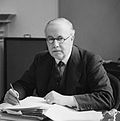 | Kingsley Wood
MP for Woolwich West | 3 April
1940 | May
1940 | | Conservative |
|---|
| 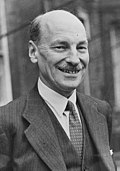 | Clement Attlee
MP for Limehouse | 11 May
1940 | February
1942 | - Deputy Leader of the House of Commons
| Labour | Churchill War
(All parties) |
| 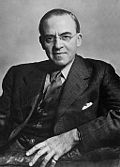 | Stafford Cripps
MP for Bristol East | 19 February
1942 | November
1942 | | Labour |
| 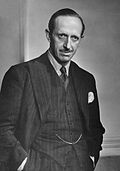 | Robert Gascoyne-Cecil
Viscount Cranborne | 22 November
1942 | September
1943 | | Conservative |
|  | Max Aitken
1st Baron Beaverbrook | 24 September
1943 | July
1945 | | Conservative |
|---|
Churchill Caretaker
( Con.–N.Lib. ) |
|  | Arthur Greenwood
MP for Wakefield | 27 July
1945 | 17 April
1947 | | Labour | Attlee
(I & II) |
|  | Philip Inman
1st Baron Inman | 17 April
1947 | 7 October
1947 | | Labour |
|---|
|  | Christopher Addison
1st Viscount Addison | 7 October
1947 | 9 March
1951 | | Labour |
| 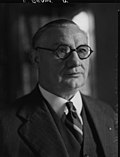 | Ernest Bevin
MP for Woolwich East | 9 March
1951 | 14 April
1951 | | Labour |
|---|
|  | Richard Stokes
MP for Ipswich | 26 April
1951 | October
1951 | | Labour |
|  | Robert Gascoyne-Cecil
5th Marquess of Salisbury | 28 October
1951 | 7 May
1952 | | Conservative | Churchill III |
Elizabeth II

r. 1952–2022 |
|  | Harry Crookshank
MP for Gainsborough | 7 May
1952 | 20 December
1955 | | Conservative |
| Eden |
| 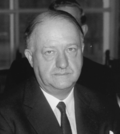 | R. A. Butler
MP for Saffron Walden | 20 December
1955 | October
1959 | | Conservative |
Macmillan
(I & II) |
|  | Quintin Hogg
2nd Viscount Hailsham | 14 October
1959 | July
1960 | | Conservative |
| 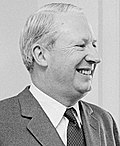 | Edward Heath
MP for Bexley | 27 July
1960 | October
1963 | - Deputy Secretary of State for Foreign Affairs
| Conservative |
|  | Selwyn Lloyd
MP for Wirral | 20 October
1963 | October
1964 | | Conservative | Douglas-Home |
|  | Frank Pakenham
7th Earl of Longford | 18 October
1964 | December
1965 | | Labour | Wilson
(I & II) |
|  | Frank Soskice
MP for Newport | 23 December
1965 | April
1966 | | Labour |
|---|
|  | Frank Pakenham
7th Earl of Longford | 6 April
1966 | January
1968 | | Labour |
|  | Edward Shackleton
Baron Shackleton | 16 January
1968 | April
1968 | | Labour |
|  | Fred Peart
MP for Workington | 6 April
1968 | October
1968 | | Labour |
|---|
|  | Edward Shackleton
Baron Shackleton | 18 October
1968 | June
1970 | | Labour |
| 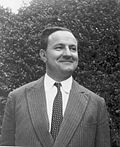 | George Jellicoe
2nd Earl Jellicoe | 20 June
1970 | June
1973 | | Conservative | Heath |
|  | David Hennessy
3rd Baron Windlesham | 5 June
1973 | March
1974 | | Conservative |
|  | Malcolm Shepherd
2nd Baron Shepherd | 7 March
1974 | September
1976 | | Labour | Wilson
(III & IV) |
| Callaghan |
|  | Fred Peart
Baron Peart | 10 September
1976 | May
1979 | | Labour |
|  | Ian Gilmour
Baron Gilmour of Craigmillar
MP for Chesham and Amersham | 5 May
1979 | September
1981 | - Government spokesman in the House of Commons for Foreign and Commonwealth Affairs
| Conservative | Thatcher I |
|  | Humphrey Atkins
MP for Spelthorne | 14 September
1981 | April
1982 | - Government spokesman in the House of Commons for Foreign and Commonwealth Affairs
| Conservative |
|  | Janet Young
Baroness Young | 6 April
1982 | June
1983 | | Conservative |
|  | John Biffen
MP for North Shropshire | 11 June
1983 | June
1987 | | Conservative | Thatcher II |
|  | John Wakeham
MP for South Colchester and Maldon | 13 June
1987 | 10 January
1988 | | Conservative | Thatcher III |
|  | John Ganzoni
2nd Baron Belstead | 10 January
1988 | 28 November
1990 | | Conservative |
|  | David Waddington
Baron Waddington | 28 November
1990 | 11 April
1992 | | Conservative | Major I |
|  | John Wakeham
Baron Wakeham | 11 April
1992 | 20 July
1994 | | Conservative |
|  | Robert Gascoyne-Cecil
Viscount Cranborne | 20 July
1994 | 2 May
1997 | | Conservative |
Major II
|
|  | Ivor Richard
Baron Richard | 2 May
1997 | 27 July
1998 | | Labour | Blair I |
| 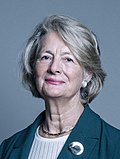 | Margaret Jay
Baroness Jay of Paddington | 27 July
1998 | 8 June
2001 | | Labour |
|  | Gareth Williams
Baron Williams of Mostyn | 8 June
2001 | 13 June
2003 | | Labour | Blair II |
|  | Peter Hain
MP for Neath | 13 June
2003 | 6 May
2005 | | Labour |
| 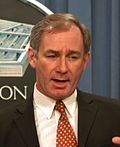 | Geoff Hoon
MP for Ashfield | 6 May
2005 | 5 May
2006 | | Labour | Blair III |
|  | Jack Straw
MP for Blackburn | 5 May
2006 | 27 June
2007 | | Labour |
|  | Harriet Harman
MP for Camberwell and Peckham | 28 June
2007 | 11 May
2010 | | Labour | Brown |
|  | George Young
MP for North West Hampshire | 12 May
2010 | 4 September
2012 | | Conservative | Cameron–Clegg
( Con.–L.D. ) |
| 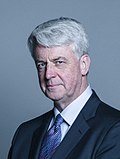 | Andrew Lansley
MP for South Cambridgeshire | 4 September
2012 | 14 July
2014 | | Conservative |
|  | Tina Stowell
Baroness Stowell of Beeston | 15 July
2014 | 14 July
2016 | | Conservative |
Cameron II
|
|  | Natalie Evans
Baroness Evans of Bowes Park | 14 July
2016 | 6 September
2022 | | Conservative | May I |
| May II |
| Johnson I |
| Johnson II |
| 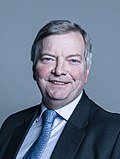 | Nicholas True
Baron True | 6 September
2022 | 5 July
2024 | | Conservative | Truss |
Charles III

(2022–present) |
| Sunak |
| 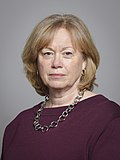 | Angela Smith
Baroness Smith of Basildon | 5 July
2024 | Incumbent | | Labour | Starmer |













































































































































